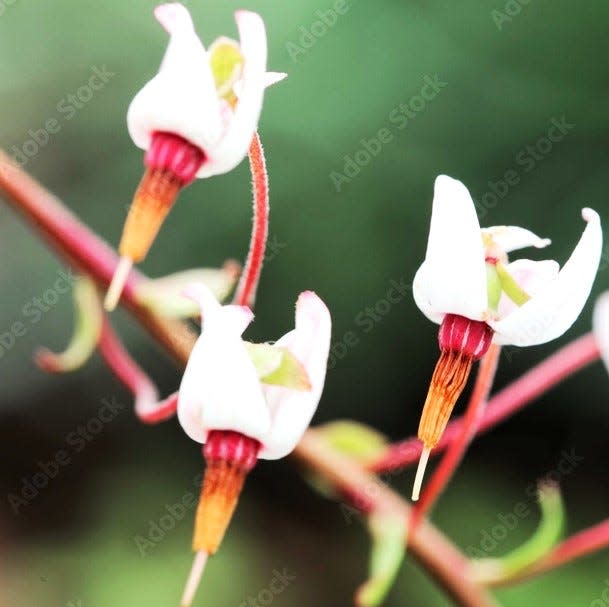Cranberries are the proper treat for Thanksgiving | ECOVIEWS
When Americans sit down at the table for a holiday meal between Thanksgiving and Christmas, certain dishes come to mind — apple pie, pumpkin pie, sweet potato casserole. And, of course, cranberry sauce. But if you want a truly American meal, you can ditch the first three: of those four iconic foods, only cranberries are native to the United States. None of the others were present at the first Thanksgiving feast.
What about apples? Was Johnny Appleseed distributing an alien invasive species? The answer is yes. That apples are native to Asia is an accepted fact. Whether the first apples came to our shores with the Pilgrims or with earlier emigrants from England, France or Spain is uncertain. Because apples taste good and remain edible for a long time, the fruit rapidly became popular in colonial times. Also, apple trees grow well in many regions; by the time of the Revolutionary War thousands of varieties had been produced by early agriculturists. Apples are here to stay, but they were not a major part of the first settlers’ holiday meals.
Pumpkins? Pumpkin pie is considered by many Americans to be traditional holiday fare. According to scientific literature, pumpkins were one of the many forms of squash derived from wild gourds that probably originated primarily in Mexico. They were already being cultivated when Columbus arrived in 1492, and pumpkins were being grown in Europe by 1542.
Sweet potatoes, another standard for U.S. holidays, may have the most questionable origins. Tropical America and Indonesia have both been suggested as the original home of the sweet potato. In either case, like apples and pumpkins, they did not originate in what is now the United States.

Cranberries, which are related to blueberries, are a completely different story, being part of the native flora of the northeastern and north central United States and eastern Canada. The woody vines grow naturally in acidic bogs. The original name “craneberry,” eventually shortened to “cranberry,” comes from the flower’s resemblance to the head of a common and distinctive native bird, the sandhill crane. Early colonists would have been aware of the cranes, and the little flowers with what look like long beaks and red heads on a curved neck would invite comparison. Google “cranberry flowers” and “sandhill cranes” to see the similarity between them.
A plant that thrives in wetland habitats in cold climates is unlikely to flourish in hot, arid regions. So when I checked scientific journals to determine what had recently been discovered about cranberries, I was surprised to find many of the studies were conducted by scientists in the Middle East. I found reports from Egypt, Turkey and Saudi Arabia in publications such as Annals of Applied Biology and the International Food Research Journal. One study examined the beneficial health properties of fresh cranberry juice due to its antioxidant effects. Another was considering meteorological effects on flowering, and a third concluded that cranberry fruit extract improved the quality of white soft cheese. Arab News, a widely distributed newspaper published in Saudi Arabia, had an article extolling the “proven health benefits” of American cranberries. The popularity of cranberries has extended to the Middle East, despite the lack of suitable natural habitat.
Although the introduction of American cranberries to the Old World is garnering some appreciation, not all reviews are positive. One journal article was titled “A New Alien Plant Species in Lithuania,” with cautionary comments about guarding against “probable invasions in natural bog habitats.” Apparently, eastern Europe’s peat bogs and cold climate are comparable to that of the cranberry’s native habitat. Cranberries, whether intentionally or accidentally introduced, can propagate and be dispersed by birds. America’s most popular native berry is considered a nuisance in some parts of the world.
Our only truly American fruits consumed throughout the country in large quantity during the holiday season are cranberries. The expression “as American as cranberry pie” is unlikely to replace the one referencing apples, but it would be more accurate.

Whit Gibbons is professor of zoology and senior biologist at the University of Georgia’s Savannah River Ecology Laboratory. If you have an environmental question or comment, email ecoviews@gmail.com.
This article originally appeared on The Tuscaloosa News: Cranberries are the proper treat for Thanksgiving | ECOVIEWS

